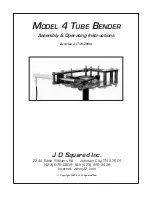
Zero 88 FLX S Lighting Console
– User Manual
Page
29
of
47
DMX
– introduction
DMX is the primary method we use to control lighting
fixtures such as dimmers, moving lights, LEDs and smoke
machines etc. In fact, any device controllable via a DMX
signal can be assigned as a fixture within ZerOS.
The name “DMX” covers the cabling (“DMX cable”), which
connects your console to your lighting rig, and the data
signal
running through those cables (“DMX signal”), which
lets your console and your lighting rig talk.
To understand DMX, you must understand “DMX
addresses” and “DMX universes”:
DMX channels (and DMX start address)
DMX can control up to 512 channels down a single cable.
Each parameter of each fixture requires one channel, so a
simple fixture may take up a single channel (for example, a
dimmer) and a more complex fixture may take up a large
range of channels (for example an LED or moving light).
So ZerOS knows which device to control, each fixture on
the cable must have a unique “DMX start address”
between “1” and “512”.
For example, if a fixture has 14 parameters, it will take up
14 DMX channels. If that fixture has a “DMX start address”
of 101, it will therefor take up channels 101
– 114. No other
fixture in the rig should be set to use these channels,
meaning the next fixture must be addressed 115 or above.
Depending on the fixture you are using, the DMX address
may be configured using DIP switches, on-screen menus
or remotely using various configuration tools. For
information on addressing your fixtures, please consult the
user manual of the fixtures.
A typical DMX addressing system may look like this:
001
– 096 – Dimmers 1 to 96
097
– 100 – Empty
101
– 114 – Fixture 1 (14 channels)
115
– 128 – Fixture 2 (14 channels)
129
– 142 – Fixture 3 (14 channels)
143
– 156 – Fixture 4 (14 channels)
DMX universes
The 512 DMX channels down a single cable is known as a
“DMX Universe”. Therefore, when more than 512 channels
are needed, a second DMX Universe is required to be
plugged into the console. The fixtures on this universe are
also addressed between channels 1
– 512, but on
“Universe 2” rather than “Universe 1”.
The FLX S lighting console supports one universe (512
channels) as standard, or can be upgraded to control up to
two
“universes” (or up to 1024 DMX channels) when
upgraded. These two universes can be sent out over the
two DMX outputs
(see “DMX Outputs” on page 37)
, or can be
distributed over an Ethernet network using either “Art-Net”
(page 41)
or “Streaming ACN”
(page 42)
.
16 bit channels
Each DMX channel (512 per universe) can be a value
between 0 and 255 (known as “8-bit”). This is sufficient for
the majority of parameters (for example, a gobo wheel may
only have 7 or 8 different gobos to select from, so 256
possible values is plenty) however in more advanced
control equipment, 256 values is not enough. In these
situations, two channels are linked together to create a
“16-bit” channel.
These channels are paired together internally and
processed as a single control channel. When output, the
second channel (sometimes called the “Fine Channel” or
the “LSB” – Least Significant Byte) is faded between 0 and
255, then returned to 0 as the first channel (sometimes
called the “Course Cannel” or the “MSB” - Most Significant
Byte) is increased by 1, then the pattern continues. This
process gives 65536 possible values for a channel instead
of the 256 possible using 8-bit control.
Composite fixtures
Certain fixture types are “composite fixtures” and have to
be patched twice, once for the intensity parameter, and
once for the remaining parameters. An example of this
would be the Varilite VL5, which has an external dimmer
channel in addition to the main control channels. Another
example would be a Lamp + 1 Channel Scroller fixture
which is used for patching colour scrollers. For these
fixtures, there are two DMX addresses displayed.
















































